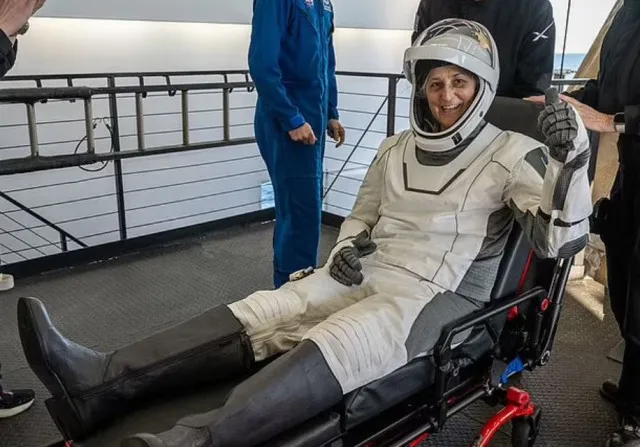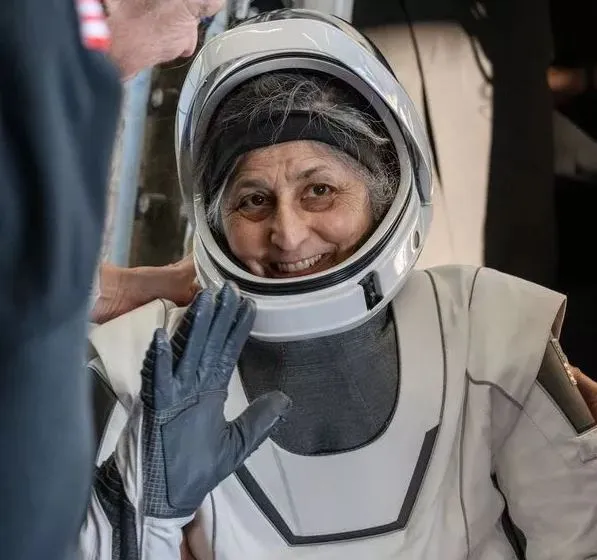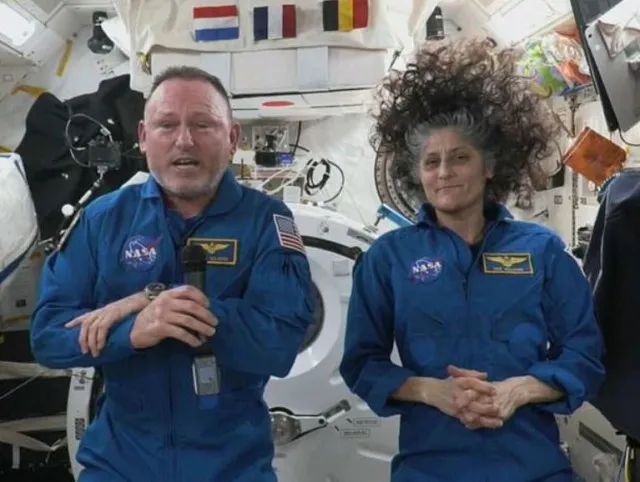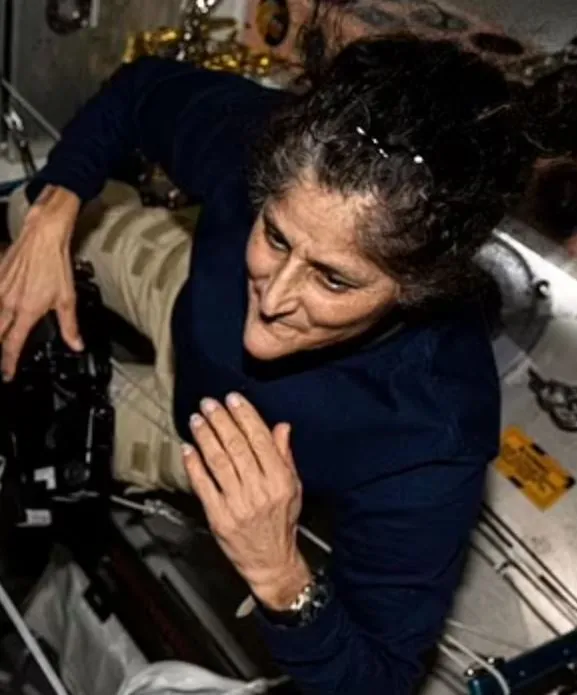After 286 days in space, the shocking impact on NASA astronauts Butch Wilmore and Sunita Williams left many stunned after their rescue.
However, experts warn that their prolonged stay aboard the International Space Station (ISS) may have lasting health consequences.
Shocking before-and-after images reveal the toll of nearly ten months in space.

Williams and Wilmore appear frail, with visible weight loss and muscle deterioration.
However, Medical teams rushed to assist them upon landing, highlighting the challenges of readjusting to Earth’s gravity.
Vision loss and cognitive decline in astronauts
Microgravity causes fluids to shift toward the head. This increased pressure can affect vision and brain function.
Many astronauts experience Spaceflight Associated Neuro-Ocular Syndrome (SANS).

This condition causes blurry vision, optic nerve swelling, and retinal folds. Studies suggest that some effects of SANS may be permanent.
Extended space missions also affect cognitive function.
Astronauts often struggle with memory, attention, and problem-solving. Stress and sleep deprivation worsen these issues.
Although most recover after returning to Earth, the long-term impact remains uncertain.
Muscle and bone loss from microgravity
Without gravity, astronauts’ muscles and bones weaken.

Regular exercise aboard the ISS helps, but it cannot fully prevent muscle atrophy and bone density loss.
Research shows that astronauts can lose up to 50% of their muscle strength after six months in space.
This makes walking on Earth difficult, requiring rehabilitation. Bone density loss increases the risk of fractures, making recovery even more challenging.
Dr. Vinay Gupta estimates that Williams and Wilmore will need six weeks of rehabilitation to regain their strength. This program includes guided exercise and a specialized nutrition plan.
Astronauts struggle with weight loss in space

Maintaining weight in space is difficult. Loss of smell, nausea, and reduced appetite make it hard to consume enough calories.
Experts noticed Williams appeared ‘gaunt’ months before her return.
NASA officials reportedly worked to stabilize her weight loss. Microgravity slows digestion, making it harder for astronauts to absorb nutrients.
Despite high-calorie diets, weight loss remains a major concern.
Fluid shifts cause unusual body changes
In microgravity, bodily fluids redistribute. Over five liters of fluid move toward the upper body. This causes facial swelling, known as ‘puffy face syndrome.’
At the same time, astronauts’ legs shrink, leading to ‘chicken legs’ and ‘baby feet.’
While these changes typically reverse after a few days on Earth, fluid shifts also increase the risk of blood clots.

Some astronauts develop Spaceflight Venous Thrombosis (SVT), a condition that may require medical treatment upon return.
Radiation exposure increases cancer risk
Astronauts are exposed to high levels of radiation in space. A week aboard the ISS equals a year’s worth of radiation on Earth.
Space radiation damages DNA, increasing the risk of cancer and other diseases. Experts warn that Williams and Wilmore’s extended mission may elevate their chances of developing long-term health issues. Dr. Gupta suggests more frequent cancer screenings for returning astronauts due to their unique exposure.
how space travel affects heart health
Microgravity impacts cardiovascular function. Fluids shift toward the head, reducing the workload on the heart. Over time, this weakens the cardiovascular system.

Astronauts returning from long missions may experience dizziness and blood pressure issues. Recovery involves monitored exercise to help the heart readjust to gravity’s demands.
Skin problems caused by space travel
Studies show that astronauts’ skin thins by nearly 20% after six months in space. Skin rashes are common, likely due to immune system weakening and exposure to irritants on the ISS.
Healing is also slower in space, meaning minor cuts or abrasions take longer to recover.
NASA closely monitors astronauts for any long-term dermatological effects upon their return.
NASA has a strict rehabilitation plan for astronauts returning from long-term missions.
Williams and Wilmore will undergo rigorous rehabilitation to restore their strength. Experts will continue to study their recovery to improve future space missions.